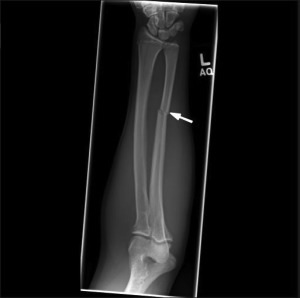Nightstick Fractures
Mechanism Mismatch
Elder physical abuse among nursing home residents is prevalent. At least 10% to 25% residents suffer. A 2012 Michigan State University study determined that 1 out of every 4 people living in a nursing home suffered physical abuse.
“We’re now on track for elder abuse to triple in the decade between 2020 and 2030,” Lead Program Coordinator for the Elder Justice Project Jacqueline Pontello said. Pontello said signs of elderly abuse include frequent injuries, unexplained bruising, loved ones seeming depressed, confused, even isolated or they’re in fear.
However, elder abuse is underdiagnosed. The website AuntMinne had an interesting article on the importance of x-rays in proving abuse. Radiologists may identify elder abuse in emergency departments based on “mechanism mismatch.”
“The radiographic finding of a ‘mechanism mismatch,’ that is, an injury or fracture pattern inconsistent with the mechanism being described by the patient or their caregivers, is a critical finding that should trigger concern.”
–author Dr. Mihan Lee, PhD and colleagues (Radiologic Clinics of North America, October 6, 2022).
The extent of injury must consistent with the reported mechanism. Researchers at Weill Cornell Medicine reviewed medical literature. Evidence suggests victims are most likely to sustain radiographically visible injuries to the face, upper extremities, and head.
Common Mechanisms of Injury
Researchers found two significant mechanisms of injury. Elders suffer abuse in two primary ways. One is assault about the face. Facial fractures appear more common than intracranial injury. The most commonly fractured facial bones are the nasal bones, followed by maxillary and orbital fractures.
The second major cause is assault causing injuries to upper extremities. The victim may attempt to brace or defend themselves. This is less obvious and harder to prove. The nursing home will blame it on a “unwitnessed fall” instead of a push. Additional training would help emergency room radiologists recognize when to ask more questions about the cause of the injuries.
“In addition, wrist and forearm fractures are particularly common, such as the classic Colles fracture. “Nightstick” fractures may also occur when a victim pronates and flexes at the elbow to block an overhead blow, exposing the ulna to direct impact.”

